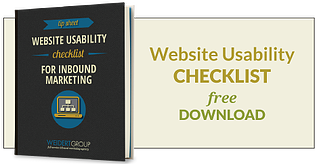


 Here they are – answers to the questions we get most often about Inbound Marketing!
Here they are – answers to the questions we get most often about Inbound Marketing!
1. How much does Inbound Marketing cost?
It depends on a number of factors: what work you need to hire out and what you can do internally, what state your website is currently in, whether or not your site is properly optimized, how much content exists and how much needs to be created, whether or not you’ve established a social media presence, and more. It also depends heavily on how much effort you’re willing to put into it, knowing that the more you put in, the more you’ll get from it.
When you first dig in to Inbound Marketing, you’ll spend more than you will in subsequent months; this is because the initial steps are foundational – implementing the first SEO work, setting up your website to accommodate offers and calls-to-action, creating the first wave of content. After that, the workload is different, your nurturing process is automated, and this new approach and the tools involved become more familiar, so the time you’ll spend is reduced.
The closest we can get, without knowing your specific situation or what your goals are, is to say that most clients who were actively marketing using traditional methods saw no significant increase in their marketing spends when they moved to Inbound Marketing. In terms of ranges, small businesses (less than 50 employees) should expect to spend $45,000 to $60,000 in year 1, and likely less after that, while medium-sized (+50 employees) businesses could expect a year 1 budget of $70,000 to $120,000. The factors that most influence cost are the amount of foundational (one-time) work that needs to be done, what capabilities you have in-house, and how fast you want to move toward achieving your goals.
2. How long before I see results?
If you’re making a concerted effort with all aspects of Inbound Marketing – optimizing your site, creating a blog and other content, promoting your content via social media, and nurturing leads – you’re going to start seeing results within 90 days of kicking off optimization and content planning. Visits to your website will increase, and prospects will begin converting on content (meaning they’ll exchange their contact information in return for valuable content). Within the next few weeks, prospects who’ve converted will start being nurtured with additional offers of new relevant content, working their way down the sales funnel. If your content is on target and provides meaningful value, many will become qualified leads and, eventually, customers.
3. Are there any marketing activities I can give up if I go the Inbound path?
The answer is an unequivocal “yes.” You can, in general, give up some costly traditional marketing – marketing that gets pushed to people who may not be interested in your product, may not be ready to buy, who don’t need what you offer or who just bought a competitor’s product. Print ads, printed brochures, sellsheets, cold calling – and the costs associated with each – should be critically evaluated for effectiveness and real impact. Inbound Marketing means you’re taking a new approach that aligns with the way people (B2B and B2C) search for solutions. They search online, so online marketing is where you need to be focused, no matter what your industry.
4. How much work will it entail – do I need to hire people to take it on?
You can choose to hire internal people with the skills required, but most choose to work with a team that knows Inbound inside and out and has valuable experience doing it successfully. An Inbound Marketing firm gives you instant access to every one of the skills you need: SEO, web design, writing, lead nurturing, content and social media strategy, social media engagement, analysis, and more.
5. How often do we need to publish content?
“Often” is the best answer. Weidert Group, as an example, publishes a blog almost every business day (with a few exceptions) and we regularly offer new advanced content. Blogs and advanced content are your sales tools, and the more you have the better off you’ll be. The best Inbound marketers think more like publishers than marketers, so the behaviors need to match.
6. My industry is different – will Inbound work for me, too?
Inbound Marketing works for any business whose prospects use search engines to find related information. Today, that’s most every type of business – and person – in the world. Whether your business is building steel welded industrial tanks, training C-suite executives to be more effective public speakers, providing sales services to software and computer manufacturers, offering business banking services, selling commercial and consumer mutual insurance, providing commercial maintenance services, manufacturing conveyor systems, or making whey protein ingredients for the food industry…any business will benefit from an Inbound Marketing approach. Each example, by the way, is a real one. These represent some of the types of businesses for whom we execute Inbound Marketing.
Here are some of the specific objections we've heard and overcome; any of these sound like something you've said?
For even more on the issue of what businesses benefit most from Inbound, see our recent blog on the subject.
7. Do I need all components of Inbound for it to work?
Yes, to make it work well. Inbound Marketing is a set of processes and tools that are interdependent. You can get a little traction by doing, say, just SEO. SEO is what helps rank you highly in search engine results…but what will happen when people go to your site? Do you have information they’ll want enough to give you their contact information in exchange? If you do SEO and create content, do you have an automated process in place to nurture those leads based on what they’ve shown interest in and where they are in the decision-making process? Inbound Marketing includes everything you need – and nothing you don’t – to attract visitors to your website, provide valuable content that demonstrates your expertise, promote your content to the best prospects, nurture leads intelligently, and analyze your efforts to ensure ongoing effectiveness.
8. Do I need a new website?
At the very least, you’ll need to create space on your homepage where call-to-action buttons will reside. These are highly visible graphic buttons that people will click if they’re interested in your content offer. Here’s a picture of one that’s on our site today.

You’ll also be creating landing pages that will be integrated into your website, and sending emails promoting your content to your lists. We encourage every client to move their website or create a new website on the HubSpot CMS platform – only because it’s the world’s greatest, most effective and coolest platform. It allows you to integrate and manage all of your Inbound Marketing efforts. It’s a turnkey, all-in-one system that centralizes and helps execute these and other steps of the Inbound Marketing process:
We highly recommend HubSpot, though there are other providers with similar software, if you’re feelin’ lucky.
9. Why do I need SEO if my content is so compelling?
You can win Greatest Content award and still not be attracting people to your site when they search for “restaurant grease traps” or “ceramic ball bearings.” To rank highly for searches like those (assuming that’s what you sell, of course), you need to have a website that’s optimized with those and other keywords you know your target to be using. Optimizing involves all sorts of behind-the-scenes data, as well as the copy that’s on your site. It also involves “off page” elements, like inbound links, directories, reviews, photo and video sharing, etc.
10. I do pay-per-click (PPC) and that’s working, so why do I need Inbound?
PPC isn’t really working – it just seems like it is. 1) PPC delivers the weakest, least qualified leads; 2) only 12% of searchers click on PPC links, while the rest of us – 88% – focus solely on organic results; 3) PPC equity has no life – if you stop PPC, you get no clicks, but with Inbound, everything you create and offer lives on the Internet and gets searched by Google every time people look for your product type.
Have a question you don’t see here? We’re more than happy to answer any of them – just reach out and ask.
Topics: Inbound Marketing
